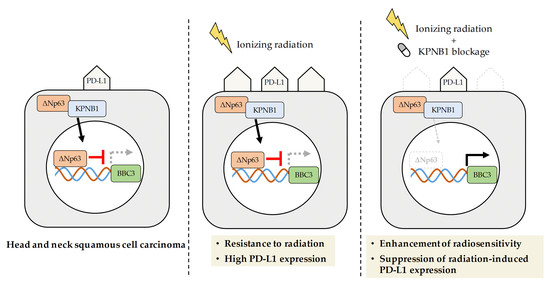
Cancers, Vol. 12, Pages 908: Karyopherin-β1 Regulates Radioresistance and Radiation-Increased Programmed Death-Ligand 1 Expression in Human Head and Neck Squamous Cell Carcinoma Cell Lines
Cancers doi: 10.3390/cancers12040908
Authors:
Masaharu Hazawa
Hironori Yoshino
Yuta Nakagawa
Reina Shimizume
Keisuke Nitta
Yoshiaki Sato
Mariko Sato
Richard W. Wong
Ikuo Kashiwakura
Nuclear transport receptors, such as karyopherin-β1 (KPNB1), play important roles in the nuclear-cytoplasmic transport of macromolecules. Recent evidence indicates the involvement of nuclear transport receptors in the progression of cancer, making these receptors promising targets for the treatment of cancer. Here, we investigated the anticancer effects of KPNB1 blockage or in combination with ionizing radiation on human head and neck squamous cell carcinoma (HNSCC). HNSCC cell line SAS and Ca9-22 cells were used in this study. Importazole, an inhibitor of KPNB1, or knockdown of KPNB1 by siRNA transfection were applied for the blockage of KPNB1 functions. The roles of KPNB1 on apoptosis induction and cell surface expression levels of programmed death-ligand 1 (PD-L1) in irradiated HNSCC cells were investigated. The major findings of this study are that (i) blockage of KPNB1 specifically enhanced the radiation-induced apoptosis and radiosensitivity of HNSCC cells; (ii) importazole elevated p53-upregulated modulator of apoptosis (PUMA) expression via blocking the nuclear import of SCC-specific oncogene ΔNp63 in HNSCC cells; and (iii) blockage of KPNB1 attenuated the upregulation of cell surface PD-L1 expression on irradiated HNSCC cells. Taken together, these results suggest that co-treatment with KPNB1 blockage and ionizing radiation is a promising strategy for the treatment of HNSCC.

Δεν υπάρχουν σχόλια:
Δημοσίευση σχολίου